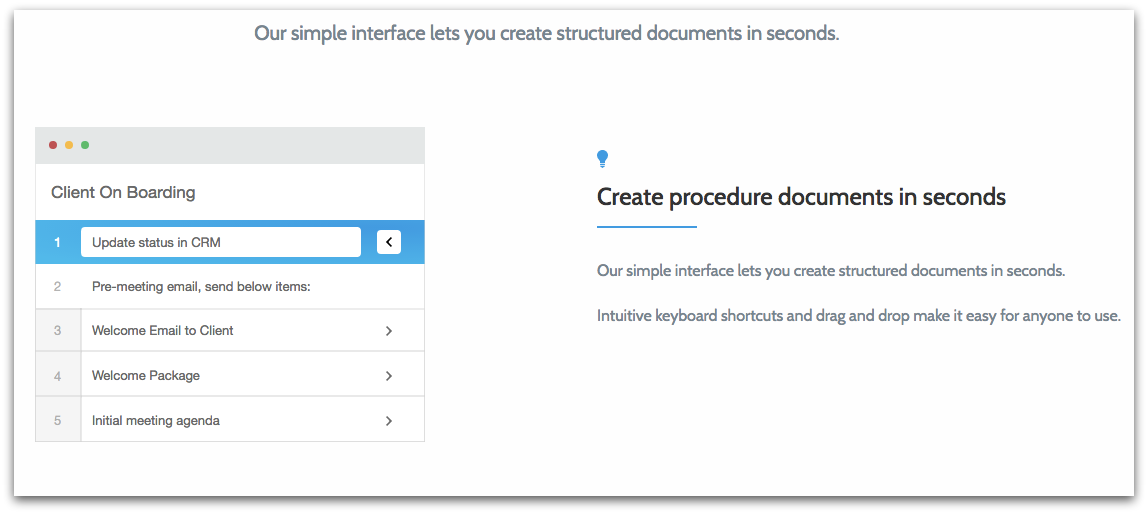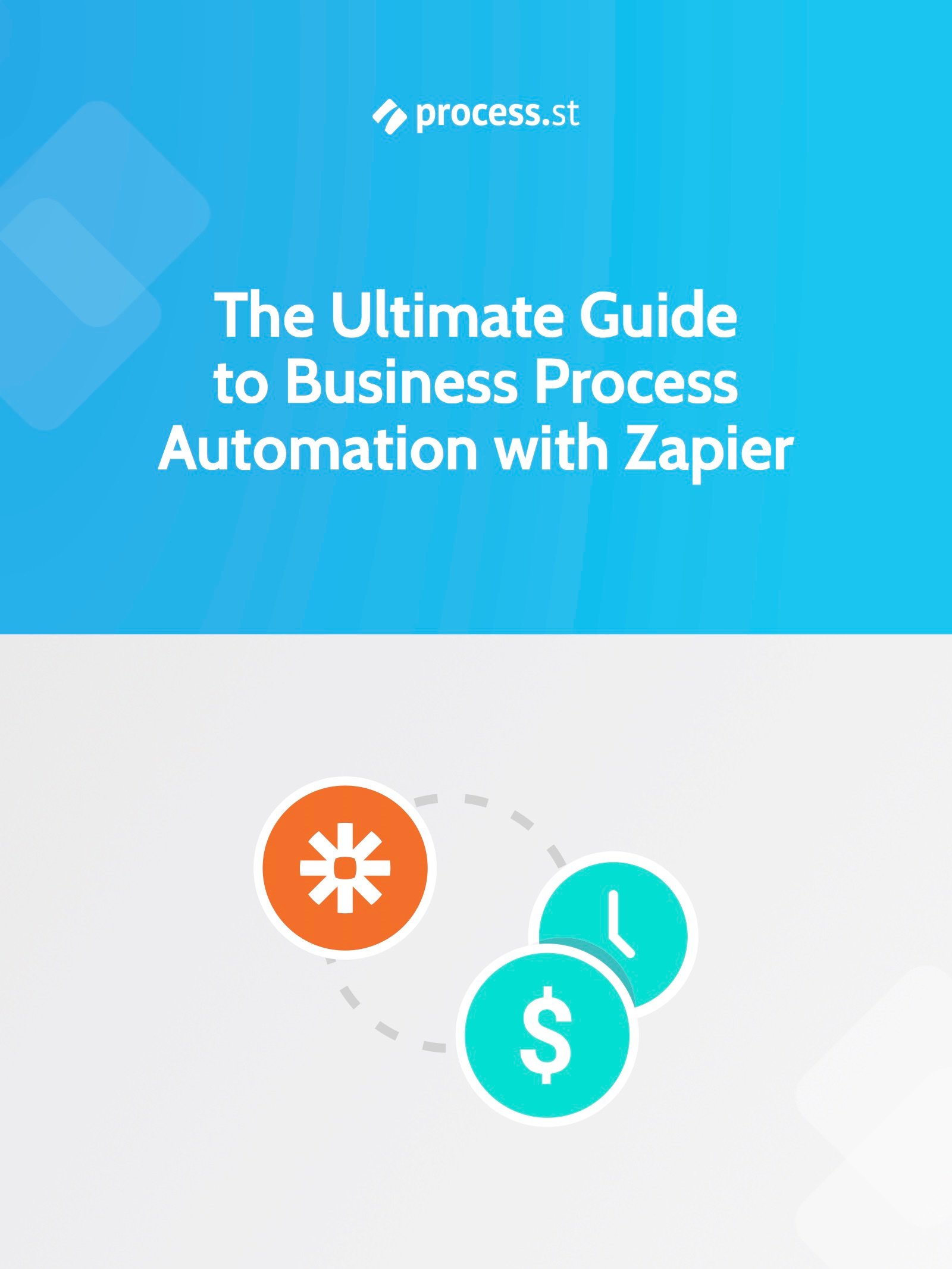
If there ever was a three-word phrase that sounded dull enough to be a sedative, it’s business process management.
It’s probably the vagueness that’s so off-putting. Which process? Managed how? Who’s business? In the last chapter, I went deep into what a process is and then why processes are important. I’ll recap so you don’t have to skip around.
A process is “a collection of interrelated work tasks initiated in response to an event that achieves a specific result”.
But what happens if that process isn’t achieving the result, or if it’s not achieving it very effectively? Every business has goals, but the interesting part — and what business process management actually is — is the exact steps a business will take to achieve those goals.
These goals could be anything from sending a newsletter on time every week to hitting $1,000,000 in revenue. Whatever the goals, your business processes are the roadmap for getting there. Not so boring, right?
BPM is just the step-by-step plan for achieving your business goals
Business process management = creating and optimizing the perfect plans to achieve your business goals.
It’s not a technology, or a one time thing. You don’t ever consider your processes ‘fully managed’ or optimized.Whether or not someone in the company has it in their job title or description, business processes are in a constant state of flux. BPM is always questioning the current state of operations.

BPM asks: “is this really the best way to do it?”
Processes are managed when they’re kept up to date, tested and optimized. Since the nature of business is always changing because companies change size quickly and the tools they use change, processes have a terrible tendency to become outdated.
Have you ever looked through a process document and thought ‘yeah, we don’t do that at all’? It’s lack of BPM that’s lead up to that moment.
Well optimized business procedures save time and company money because time wasted following poor processes compounds every time the process is run. If hundreds of people run a bad process hundreds of times, you could lose out on weeks of your year without noticing, leading to a massive dip in revenue and no proper explanation.
Owning your processes
An important feature of BPM is ownership. Processes should be owned by people, and those people are responsible for updating and optimizing them. This makes sure the processes actually get used, too.
As AIIM says, “human nature takes over and the momentum peters out” if people don’t feel ownership for their processes.
The best people to be in charge of creating and maintaining their own processes are those responsible for doing the tasks. Naturally, I’m responsible for keeping the writing and editing processes up to date. Our support team takes care of the support processes, and anyone else who uses these processes can make edits and suggestions to optimize them, too.
Managing your processes collaboratively
When you create and manage processes for just yourself, you can easily slip into complacency. You might not bother updating an old process because you know what it means and it doesn’t matter. But here’s the thing: you become the bottleneck if that happens.
You become the person getting emails asking for clarification and wondering why your process talks about firing the dial-up modem and logging onto Lotus Notes.

This is why you shouldn’t keep your processes hidden. You should get other people to use them, offer their feedback and apply updates. Zapier’s Wade Foster — who often talks deeply about processes — lets anyone edit a process in the company because it keeps the processes current and available, and promotes a culture of openness.
“The purpose of a document is the dissemination of knowledge. When access is restricted, it sends a message that the information is only relevant to a certain group of people. Remember that these documents are intended to reach readers and employees. Publish documents on a platform where your team will see them daily. […] Process documents are for the company to use, so feedback and new input can be incorporated to make them more effective.” — Wade Foster
Optimizing your processes
For simple processes, it might be something like switching over to a more efficient tool. For long processes with many people involved, you’ll have to think deeper. Laserfiche boils it down to these 5 questions:
- What is the goal or desired outcome of this process?
- When does the process begin and end?
- What activities move the process forward?
- What departments and/or employees are involved?
- What information is being transferred between steps?
The difference between optimizing your processes and not bothering is the difference between having an office full of people shrugging and making faces or having an office full of tightly bound teams who know how the best way to create, improve, market, distribute, manage, sell, design, write and do.
Here’s the process for optimizing a process — run it every time you notice an inefficient process is dragging you down, or for your regular process audit:
When you’re editing process documents or wondering whether to scrap a process entirely and start fresh, use the above process, but remember…
No process is ever perfect, but the idea is to get as close to perfection as possible
Processes are in a constant state of optimization. Just like with any element of business, you can follow best practices to get a ballpark idea, but you won’t nail anything unless you regularly test, get feedback, iterate and test.
While growth hacking isn’t exactly BPM, there are plenty of parallels, Sean Ellis explains:

What are you striving for?
Like any optimization experiment, you need to identify the KPI you’re trying to improve. You could develop a process for improving CRO projects, and the success metric would be net percentage lift per week. The only way to know if you’ve successfully optimized the process is to look at the hard facts.
Managing processes with automation
It’s a misconception: process management ≠ process automation. Even though it is often true that automated processes are more efficient, skip the automated process if the task is better off done manually because of the high margin for computer error that could be corrected by human common sense. Again, it’s something to test and think properly about. While you mull it over, I’d suggest reading our ebook which is a complete guide on the topic.
Download our free 111-page ebook on automating your work with Zapier
Ever wished you could automate the stuff you hate doing at work? Then you need to check out The Ultimate Guide To Business Process Automation with Zapier!

We’ve created the perfect resource to get you saving time and money by automating your business’ processes.
From basic tasks such as saving Gmail attachments into Dropbox to shipping your Salesforce leads into Mailchimp, the Ultimate Guide will guide you through setting up the perfect Zaps to automatically handle the tasks that clog up your schedule.
Plus, with Zapier’s 500+ integrated apps, chances are that your favorite programs are just waiting to be linked!
Better yet, it’s completely free!

Managing your business processes doesn’t have to be difficult
Since I’ve already described what processes are and why they’re important, in the next chapter of this business process management guide, I want to go deeper into BPM and talk about some of the more nuanced practices, along with how to actually implement processes and BPM software in your business.







Benjamin Brandall
Benjamin Brandall is a content marketer at Process Street.